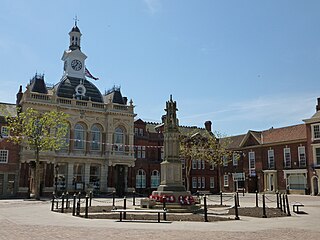
Retford, also known as East Retford, is a market town in the Bassetlaw District in Nottinghamshire, England. It lies on the River Idle and the Chesterfield Canal. Retford is located 26 miles (42 km) east of Sheffield, 23 miles (37 km) west of Lincoln and 31 miles (50 km) north-east of Nottingham. The population at the 2021 Census was 23,740. The town is bypassed by the A1 road.
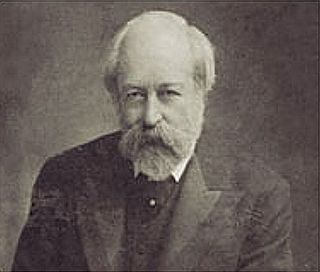
George Frederick Bodley was an English Gothic Revival architect. He was a pupil of Sir George Gilbert Scott, and worked in partnership with Thomas Garner for much of his career. He was one of the founders of Watts & Co.

Nottinghamshire is a county that is situated in the East Midlands of England. The county has history within the Palaeolithic period, dating anywhere between 500,000 and 10,000 BCE, as well as early Anglo-Saxon communities, dating to 600 CE. Furthermore, the county has significance in the political aspects of English history, particularly within intercommunal fighting, and its economics is historically centred around coal and textiles.

North Leverton with Habblesthorpe is a village and civil parish in the English county of Nottinghamshire. It is about 5 miles or 8 km east of Retford. The population as at the 2011 Census was 1,047, and in the Census 2021 it had increased to 1,079.

Worksop Priory is a Church of England parish church and former priory in the town of Worksop, Nottinghamshire, part of the Diocese of Southwell and Nottingham and under the episcopal care of the Bishop of Beverley.

All Saints' Church, Nottingham, is an Anglican church in Nottingham, England.

St Peter's Church, formally The Church of St Peter with St James, is an Anglican parish church in the city centre of Nottingham, England. It is part of the parish of All Saints', St Mary's and St Peter's, Nottingham.
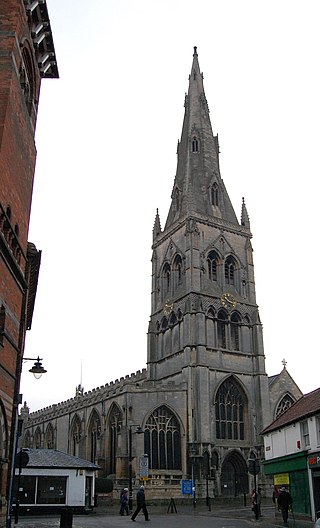
St Mary Magdalene Church, Newark-on-Trent is the parish church of Newark-on-Trent in Nottinghamshire, England. It is dedicated to Mary Magdalene and is the tallest structure in the town.
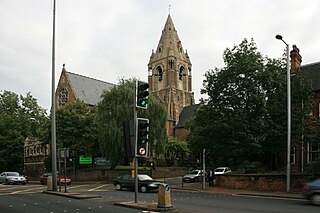
St. Andrew's Church Nottingham is a parish church in the Church of England.

Holy Trinity Church, Lenton is a parish church in the Church of England Diocese of Southwell, located in Lenton, Nottingham.

St Peter's Church, Radford is an Anglican parish church in Radford, Nottingham, located at 171 Hartley Road. It is a Grade II listed building as being of special architectural or historic interest.
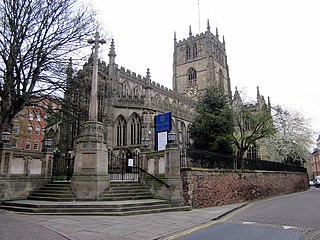
The Church of St Mary the Virgin is the oldest parish church of Nottingham, in Nottinghamshire, England. The church is Grade I listed by the Department for Digital, Culture, Media and Sport as a building of outstanding architectural or historic interest. It is one of only five Grade I listed buildings in the City of Nottingham.
St. James' Church, Standard Hill was a Church of England church in Nottingham.
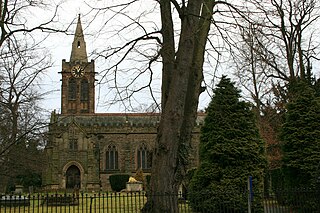
St. Peter's Church is a Church of England church in Ruddington, Nottinghamshire.

Our Lady and St Peter's Church, Bothamsall is a Grade II listed parish church in the Church of England in Bothamsall. The church is part of the Lound Hall Estate, Bothamsall. The buildings repair costs are procured by the Lord of the manor.

St Peter's Church, Gamston is a Grade I listed parish church in the Church of England in Gamston, Bassetlaw.

St Paul's Church is a Grade II* listed parish church in the Church of England in West Drayton, Nottinghamshire.

All Saints’ Church, South Leverton is a Grade II* listed parish church in the Church of England in South Leverton, Nottinghamshire.

St Peter's Church, Belper is a Grade II listed parish church in the Church of England in Belper, Derbyshire.






















